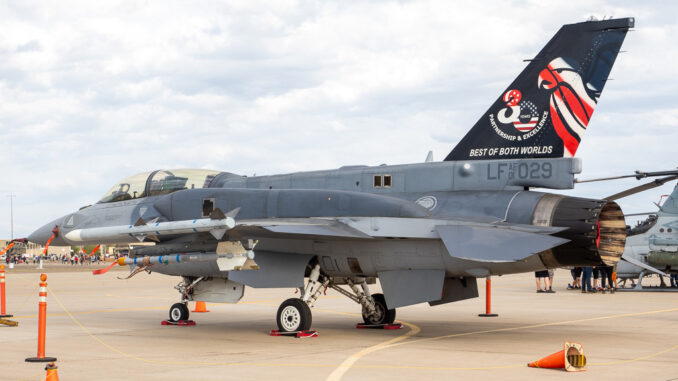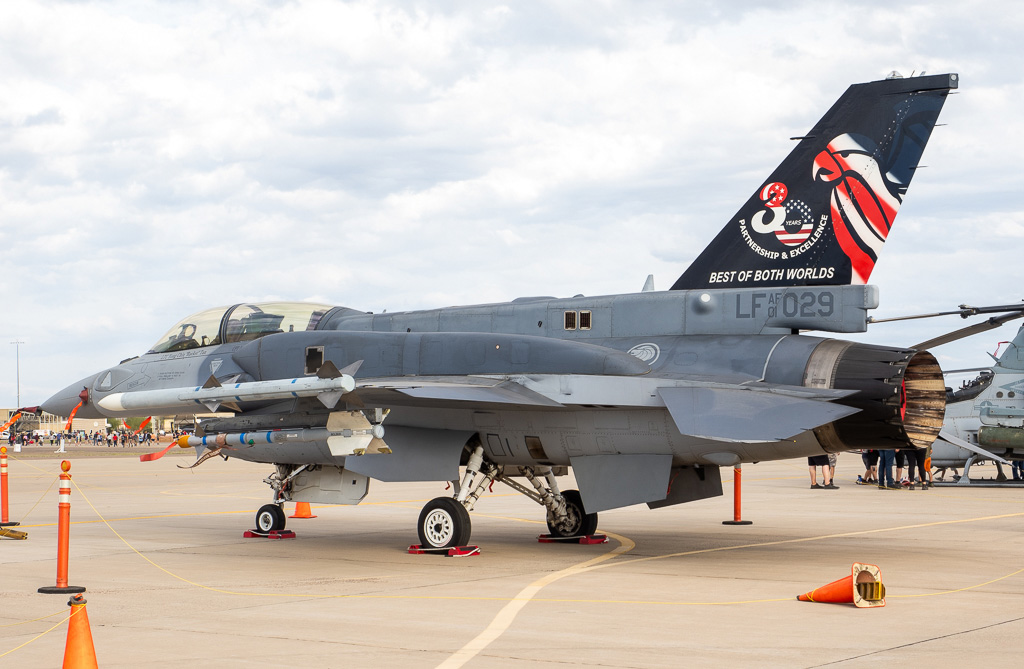
F-16 crash due to gyro failure. The flight computer rejected correct data. Consequences and preventive measures.
A Republic of Singapore Air Force (RSAF) report has revealed that an F-16 crash on 8 May 2024 was caused by a failure of two pitch gyroscopes. The faulty gyroscopes transmitted erroneous readings to the digital flight computer (DFCC), causing the aircraft to lose control. The pilot managed to eject safely. The report points out that these gyroscopes are used in F-16 fleets worldwide, and no preventive maintenance is currently stipulated by the manufacturer, Lockheed Martin. The RSAF has suspended F-16 training flights and implemented additional maintenance measures.
The incident of 8 May 2024: a critical failure
Technical details of the crash
On 8 May 2024, an RSAF F-16 crashed shortly after take-off during a training flight at Tengah Air Base, west of Singapore. The investigation revealed that the main cause of the crash was the failure of two of the aircraft’s four pitch gyroscopes. These gyroscopes, Gyroscope 2 and Gyroscope 3, transmitted erroneous but similar readings to the digital flight control computer (DFCC). The DFCC, taking these readings as correct, rejected the alternative readings, including those from the backup gyro, Gyroscope 4.
Gyroscopes are mechanical devices comprising a rotating rotor mounted on gimbals, which measure the aircraft’s rotation rates in the pitch, roll and yaw axes. These measurements are then converted into electrical signals used by the flight computer to stabilise and control the aircraft.
Consequences of failure
The immediate consequence of the gyro failure was a loss of control of the aircraft shortly after take-off. The DFCC, manipulating the aircraft in response to the erroneous readings, rendered the aircraft uncontrollable. The pilot had to eject to save his life, which he did successfully, underlining the importance of ejection systems in modern fighter aircraft.
The incident also led the RSAF to temporarily suspend F-16 training flights to ensure the safety of flight operations and to allow a thorough inspection of the aircraft’s gyroscopes and other critical systems.

F-16 gyroscopes: maintenance and reliability
Gyro maintenance
According to the report, the faulty gyroscopes showed no signs of malfunction during pre-flight tests, including the Built-In Test (BIT), which did not detect any faults. This lack of detection highlights the limitations of current pre-flight tests and the need to re-evaluate maintenance procedures.
The F-16’s gyroscopes, manufactured by Lockheed Martin, are not subject to any preventive maintenance stipulated by the manufacturer. If they fail, they are simply replaced. However, the RSAF has decided to introduce additional maintenance measures to prevent future incidents. These include periodic disassembly of the gyro assemblies and thorough testing of the components for wear and tear.
Impact on global F-16 fleets
The gyroscopes in question are used by F-16 fleets around the world, which means that this failure could potentially affect other air forces using these aircraft. Increased preventive maintenance could become necessary to ensure the reliability of the gyroscopes and the safety of flight operations.
The implementation of these preventive measures by the RSAF could serve as a model for other air forces. Rigorous monitoring and regular testing of critical components such as gyroscopes are essential to maintain the performance and safety of modern fighter aircraft.
Consequences and preventive measures
Reactions and adaptations by the RSAF
In response to the incident, the RSAF took immediate action to ensure the safety of its flight operations. In addition to temporarily suspending training flights, the RSAF put in place a preventive maintenance programme for the gyroscopes on its F-16s. This programme includes periodic tests and detailed inspections to identify and replace worn components before they cause in-flight failures.
The RSAF has also strengthened its training protocols for pilots and maintenance technicians, focusing on the detection and management of potential flight system failures. These measures are designed to improve resilience and responsiveness to technical problems.
Consequences for Lockheed Martin
For manufacturer Lockheed Martin, this incident could have significant repercussions. The need to reassess maintenance procedures and potentially introduce preventive maintenance programmes for gyroscopes could result in additional costs and adjustments to production and spare parts management.
In addition, Lockheed Martin could face clarification and warranty requests from F-16 users around the world. Ensuring the reliability and safety of their products is crucial to maintaining customer confidence and avoiding similar incidents in the future.
Implications for air safety
This incident highlights the crucial importance of flight control systems and associated components such as gyroscopes. Air forces and manufacturers must work together to ensure that flight systems are not only efficient, but also reliable and safe. Preventive maintenance, continuous monitoring and rigorous testing are key to achieving this goal.
The lessons learned from this incident can also be applied to other types of military and civil aircraft, underlining the need for a proactive approach to maintenance and risk management.
Outlook and recommendations
Modernisation and innovation
To prevent such incidents in the future, it is essential to invest in the modernisation and innovation of flight control systems. The development of more robust gyroscopes and the implementation of advanced diagnostic technologies can improve system reliability and reduce the risk of failure.
Flight control systems based on artificial intelligence and advanced sensors could also offer solutions for detecting and correcting anomalies in real time, thereby increasing the safety of flight operations.
International collaboration
Incidents like this underline the importance of international collaboration between air forces, manufacturers and regulators. Sharing information and best practice on the maintenance and management of critical systems can help prevent failures and improve overall aviation safety.
The RSAF F-16 crash in May 2024 highlights the technical challenges and implications of managing flight control systems. The measures taken by the RSAF and the recommendations for increased preventive maintenance will serve as important lessons for the entire global aviation community.
War Wings Daily is an independant magazine.